We all know it's pumpkin season. But there's so much more to fall flavors and colors! Here's why you should shop seasonally when it comes to produce, plus tons of ways to incorporate these veggies into your fall meal plan!
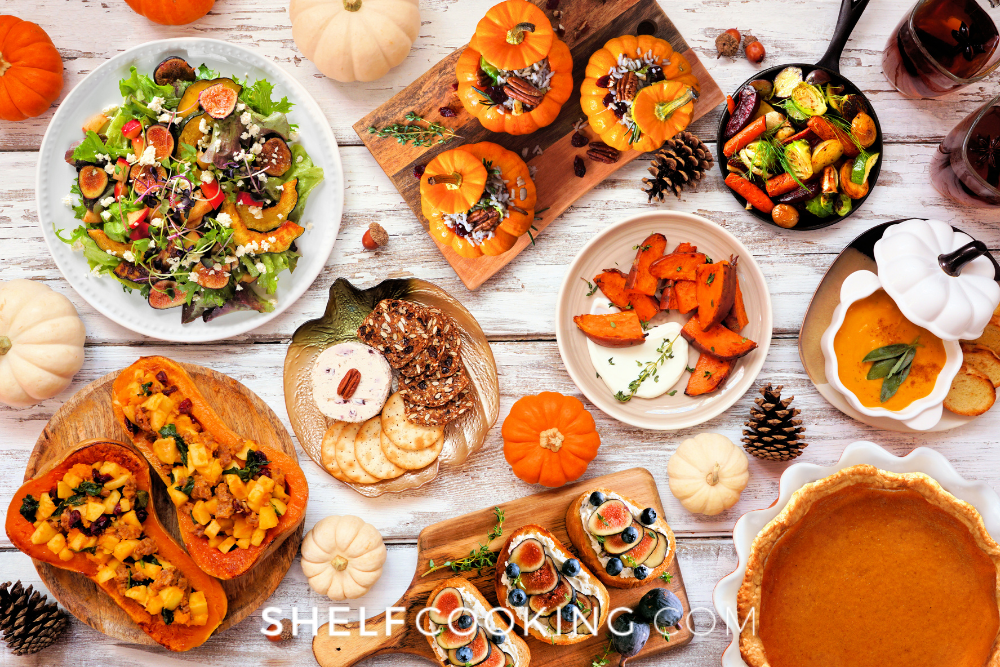
It's important to know what produce is at its peak. In this fall produce guide, we'll take you on a journey through the fall harvest, showcasing the fruits and vegetables you should look for in the grocery store or at your local farmers' market & ways to use them!
WHY SHOULD YOU USE PRODUCE THAT'S IN SEASON
- Optimal Flavor: Seasonal produce tends to be at its peak of flavor, taste, and freshness. Fruits and vegetables picked at the right time of year are often more delicious and enjoyable to eat.
- Nutritional Value: Seasonal fruits and vegetables are typically richer in nutrients. They have had the chance to fully ripen in the sun and soil, which can result in higher vitamin and mineral content.
- Cost-Efficiency: Seasonal produce is usually more abundant and, therefore, less expensive. When you buy what's in season, you can often save money while still enjoying high-quality ingredients.
- Support Local Farmers: Buying seasonal produce can support local farmers and the community. You're contributing to the local economy and helping small-scale farmers thrive.
- Reduced Environmental Impact: When you buy in-season produce, it doesn't have to travel as far to reach your plate. This reduces the carbon footprint associated with transportation, which is better for the environment.
In short, using seasonal produce allows you to enjoy the freshest, healthiest ingredients while supporting local agriculture and making a positive impact on the environment!

WHAT'S IN SEASON DURING FALL?
Apples
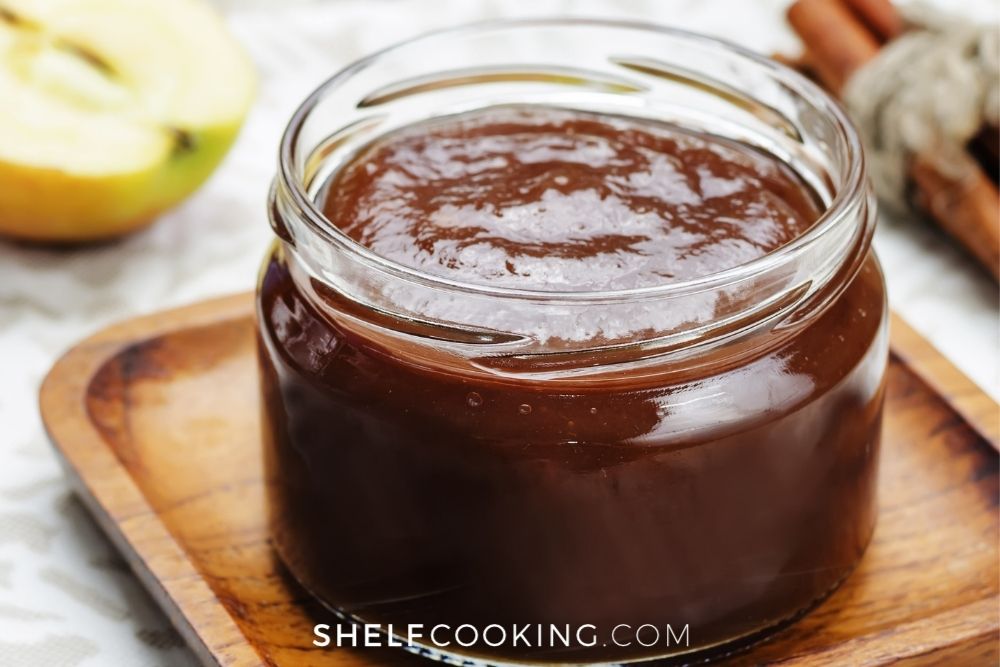
Autumn belongs to the apple. Whether you prefer sweet or tart varieties, apples are perfect for snacking, baking, and making warm apple cider. Try making apple pies, crisps, or simply slice them for a nutritious, on-the-go snack. Our check out some of these favorite Shelf Cooking Recipes!
- Easy Homemade Apple Butter
- Slow Cooker Applesauce Recipe
- 3-Ingredient Snickers Apple Salad
- Apple Crisp Recipe (Using a Slow Cooker!)
- Caramel Apple NACHOS
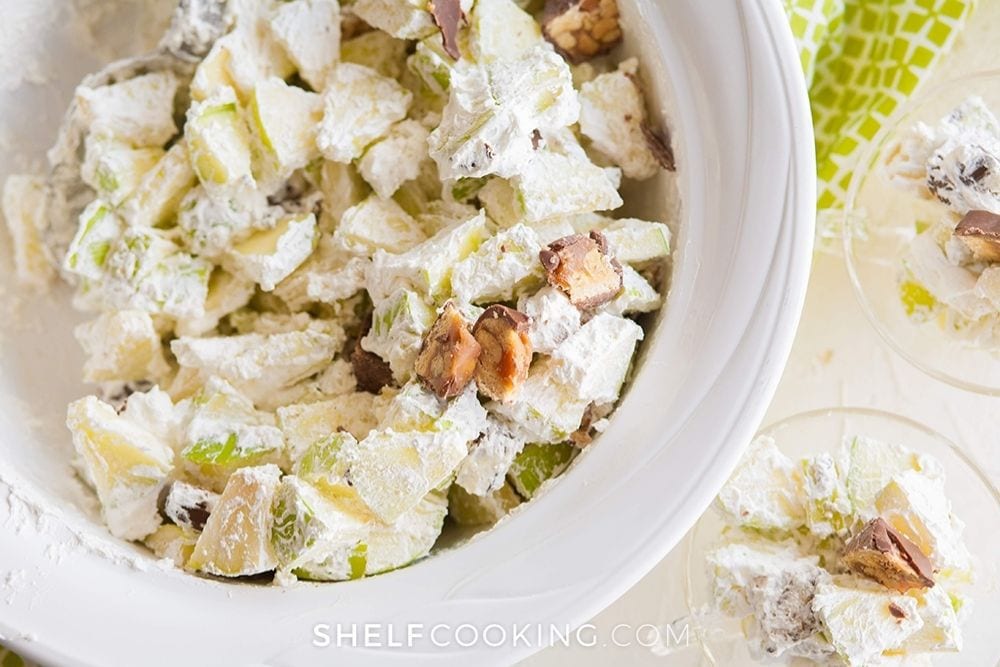
Butternut Squash
This creamy, sweet squash is versatile and perfect for soups, roasts, or even as a filling for ravioli. Its vibrant orange color is a visual delight and an indicator of its nutritional value.
It's great to cut into cubes and roast on a baking sheet with some olive oil, salt and pepper. Serve as a side dish! The most popular way to enjoy this golden vegetable, though, is probably Butternut Squash Soup. We have an amazing recipe for you here!
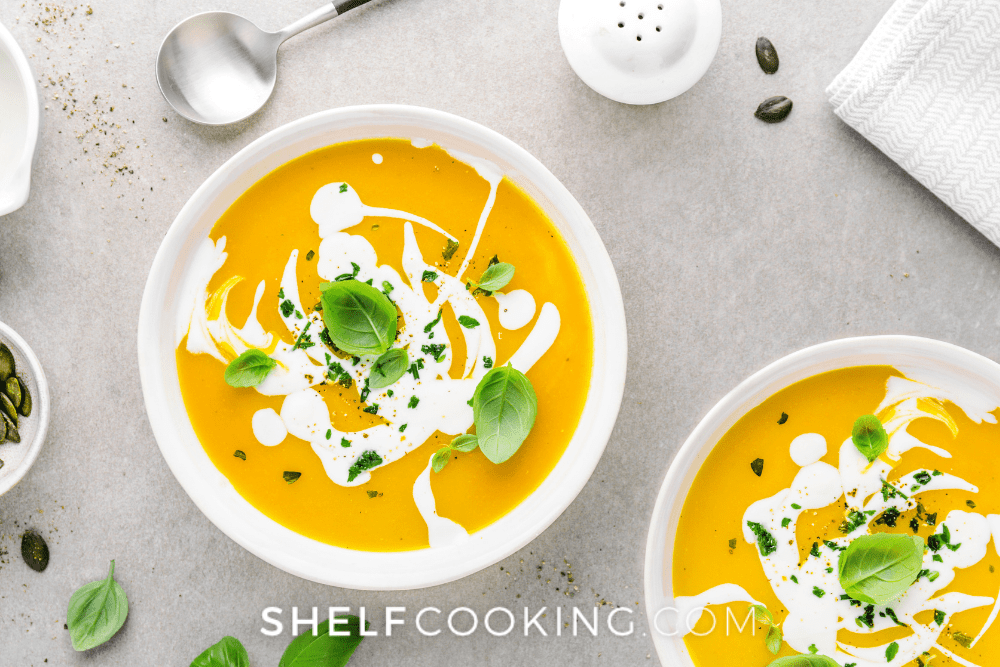
Sweet Potatoes
A staple of Thanksgiving feasts, sweet potatoes can be used in so many ways (that don't involve marshmallows.) They are rich in fiber and vitamin A. Sweet potatoes can be baked whole, cubed and roasted, or added into soups and chilis.
Here are our favorite Shelf Cooking recipes to get you inspired!

- Sweet Potato Fries – 3 Ways
- Sweet Potato Breakfast Hash: One-Pan Recipe
- Easy Sweet Potato Casserole Recipe + Topping Options!

Brussels Sprouts
These mini cabbages are at their prime in the fall. Brussels sprouts might have a bad reputation, but roasting them with a little love (and olive oil) can transform them into a crispy, delicious side dish that even the pickiest eaters will gobble up. Here are a few more creative ways to use this veggie:
- Brussels Sprouts Slaw: Make a coleslaw with shredded Brussels sprouts, carrots, and a creamy or tangy dressing. It's a crunchy and refreshing alternative to traditional coleslaw.
- Brussels Sprouts and Bacon: Cook chopped bacon until crispy, then add halved Brussels sprouts to the same pan. Sauté them together until the sprouts are tender and infused with the smoky bacon flavor. If you're feeling really crazy, you can even drizzle this dish with some maple syrup and toss in toasted pecans for a sweet AND savory dish!
- Stir-Fry: Add sliced Brussels sprouts to your stir-fry for extra crunch and nutrition. They pair well with other vegetables, tofu, or chicken and soften in some teriyaki sauce.
- Classic Balsamic Roasted Brussels Sprout recipe!
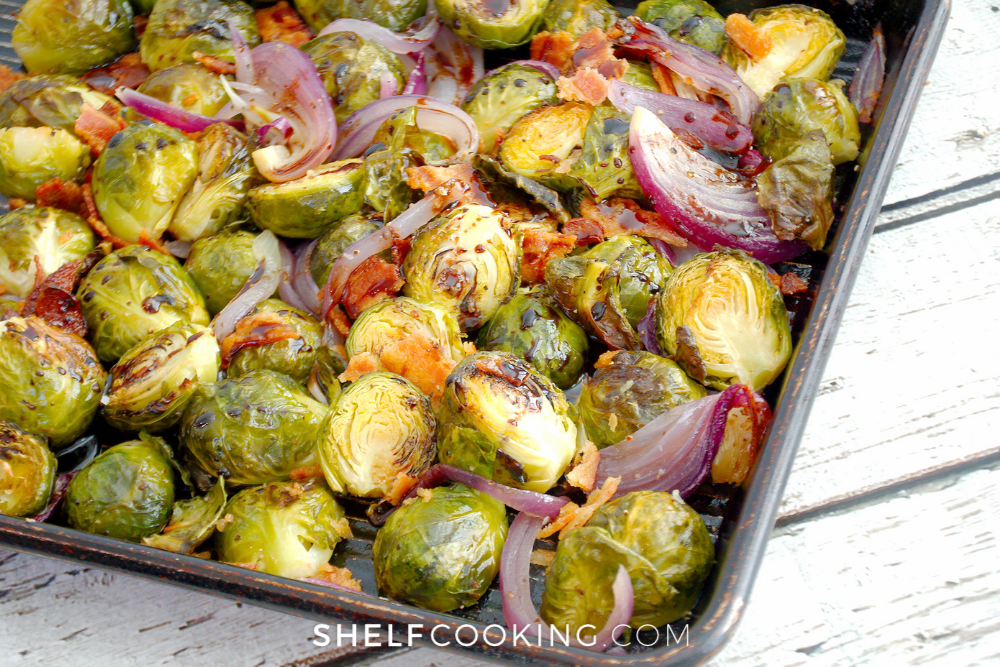
Cranberries
The tartness of cranberries complements the richness of fall dishes. So why do we only eat it once per year on Thanksgiving?! There are so many more ways we can incorporate this bright and flavorful fall fruit.

- Cranberry Baked Goods: Cranberries can be added into muffins, scones, and biscotti!
- Cranberry and Brie Stuffed Chicken: Stuff chicken breasts with a mixture of cranberries, Brie cheese, and herbs for an elegant and tasty dinner.
- Cranberry and Walnut Salad: Toss cranberries, walnuts, and crumbled feta cheese with mixed greens for a refreshing salad.
- Cranberry BBQ Sauce: Create a unique barbecue sauce by combining cranberries, ketchup, vinegar, and spices. Use it to marinate or baste meats.
- Cranberry Salsa: Mix cranberries with cilantro, lime juice, jalapeños, and onions to make a zesty salsa, perfect for topping grilled chicken or fish.
- Cranberry and Turkey Sandwich: Use leftover turkey from Thanksgiving to make a sandwich with cranberry sauce, stuffing, and gravy for a hearty post-holiday meal.

Pears
Pears come in various flavors and textures, making them suitable for both snacking and cooking. Poached pears, pear crisps, or simply sliced and paired with cheese make for delightful fall treats. Try these recipe ideas:
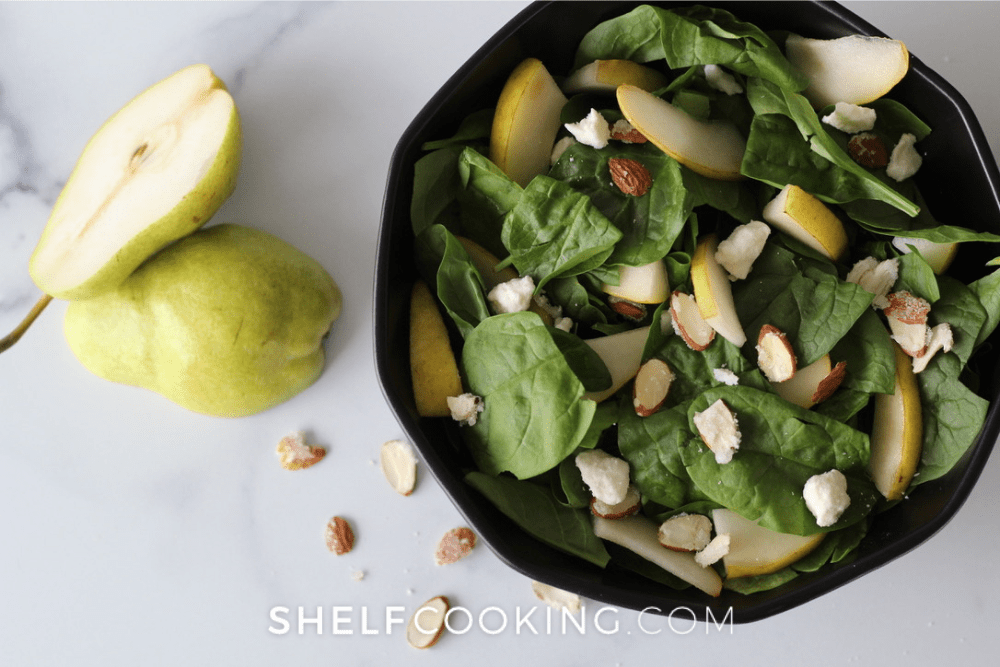
- Pear Tart: Bake sliced pears in a tart or pie crust with a sweet custard filling for a classic dessert.
- Poached Pears: Simmer whole or halved pears in a flavorful syrup made with sugar, wine, or spices for a sophisticated dessert.
- Pear Salad: We happen to have a delectable Fall Pear Salad recipe here!
- Pear and Gorgonzola Crostini: Top toasted baguette slices with sliced pears, Gorgonzola cheese, and a drizzle of honey for an elegant appetizer.
- Pear-Stuffed Pork Chops: Fill pork chops with a mixture of diced pears, breadcrumbs, and herbs, then bake or grill for a delicious main course.
Grapes
Did you know that Fall is grape-harvesting season? Fresh grapes don't necessarily need a recipe if your family is a fan of the crispy crunchy snack as-is. But if you're looking for a way to use up extra grapes, or perhaps grapes that are a little bruised and mushy, try these recipe ideas!

- Grape Salad: Toss grapes with a creamy dressing made of Greek yogurt and honey, and add a sprinkle of nuts and fresh mint for a refreshing dessert or side dish.
- Frozen Grapes: Freeze grapes for a healthy and delicious frozen treat. They're a fantastic alternative to sugary popsicles.
- Grape Jam or Jelly: Turn grapes into a homemade jam or jelly to spread on toast, pancakes, or use as a filling for pastries.
- Grape and Walnut Chicken Salad Sandwich: Make a unique chicken salad by adding halved grapes, chopped walnuts, and a light dressing to shredded chicken. Serve it in sandwiches or on crackers.

- Fruit Skewers: Thread grapes onto skewers with other fruits like melon, pineapple, and strawberries for a colorful and fun snack.
- Grape Sorbet: Blend grapes with a little lemon juice and sugar, then freeze for a light and fruity sorbet.
- Grape and Walnut Chicken Salad Sandwich: Make a unique chicken salad by adding halved grapes, chopped walnuts, and a light dressing to shredded chicken. Serve it in sandwiches or on crackers.
Cauliflower
Cauliflower can be used as a low-carb alternative for mashed potatoes or in a hearty cauliflower soup. Its neutral flavor makes it an excellent canvas for various seasonings. We've actually shared a great post with 15 Unique Ways to Incorporate Cauliflower in your recipes, plus all of the fantastic health benefits of this cruciferous vegetable!
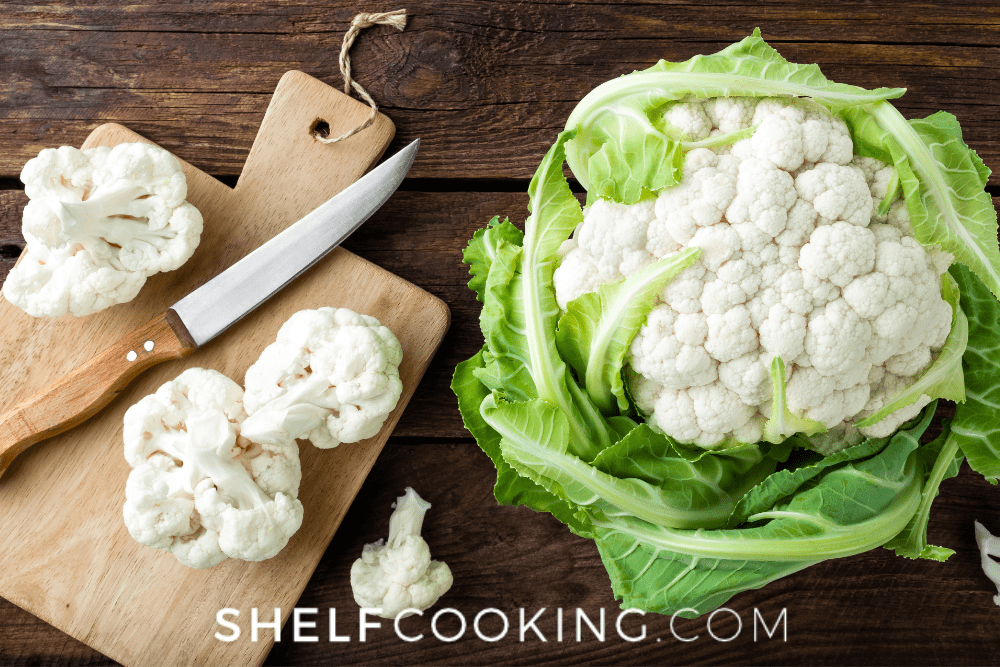
Figs
Figs have a sweet, honey-like flavor and can be eaten fresh or added to salads, desserts, or even used in preserves. Figs are FULL of vitamins like Vitamin K, A and B, calcium, potassium, magnesium, and iron! They also add fiber and antioxidants…do you need more convincing to give them a try?!

- Figs with Cheese: Serve figs with a variety of cheeses such as goat cheese, blue cheese, or brie for a delightful appetizer or cheese platter.
- Fig Jam: Make homemade fig jam or preserves to spread on toast, scones, or use as a filling for pastries and sandwiches.
- Fig Tart: Bake fresh figs on a tart crust with a sweet custard filling for a delectable dessert.
- Honey-Roasted Figs: Roast figs with honey, cinnamon, and a touch of orange zest for a simple and elegant dessert or side dish.
- Fig Chutney: Cook figs with onions, vinegar, and spices to create a flavorful chutney that pairs well with roasted meats or cheese.
- Fig and Blue Cheese Flatbread: Create a tasty flatbread by adding figs, blue cheese, and a drizzle of honey or balsamic glaze.
Figs' unique combination of sweet and savory flavors makes them a versatile addition to both sweet and savory dishes. Whether you're looking for appetizers, salads, desserts, or main courses, figs can add a touch of elegance and a burst of flavor to your recipes.

As the leaves change and the weather turns cooler, fall brings with it an array of seasonal produce that's not only delicious but also packed with essential nutrients. By incorporating these fall fruits and vegetables into your family's meals, you'll not only savor the flavors of the season but also promote a healthier and more sustainable approach to eating!
So, embrace the spirit of autumn and head to your local market to enjoy these fabulous fall foods with your loved ones. Happy cooking and happy fall!

buying local and seasonal is best choice always, great tips, thanks for sharing